In a survey, it was found that only 12% of the employees were of the opinion that their organization had a strong onboarding process in place.
How scary and alarming this is, we all know.
No company wants to go through the hassle of a high attrition rate and frequent recruitment, as it is a classic waste of resources in every sense.
This article details everything you need to know about the employee onboarding process and what it entails, including examples.
Before moving further, let’s find out what onboarding is.
What Do You Mean by an Employee Onboarding?
Companies have a lot of information, like their work culture, expectations, history, vision, mission, hierarchy, process, etc., which needs to be shared with new hires.
Employee onboarding is a process that involves integrating new employees into the company and familiarizing them with its policies, culture, and offerings.
Benefits of Having an Onboarding Process
Why do you need an onboarding process?
Well, it has a lot of benefits. Studies show it can help you retain employees better by as much as 82% and boost productivity by 70%.
Let’s find out the reasons why you should have an onboarding process in place.
- The process lays the foundation for employees regarding their time in the company.
- It helps employees prepare and fulfill their responsibilities. According to the study, 29% of employees said they were ready for the responsibilities.
- It helps create employee satisfaction.
- It gives them a clear picture of what’s expected from them and helps align better with the company’s goals.
- It helps them learn about the company’s policies, work culture, and products/services.
- The process helps create a comfortable environment and reduce anxiety among employees.
A good process will help you forge the required connection of the new hire with the company and smoothen this process of transitioning into the new role.
Why Should You Have a Presentation of the Onboarding Process?
As a company, you will have a lot of information to share with the employees. For instance, who they will be working with, the entire process, the hierarchy in the organization, whom they will be reporting to, etc.
- Creating a presentation with all the relevant information will help you standardize the process across the company.
- It will keep all your information organized in one place and ready to be shared as and when needed.
- You can showcase a month or six months roadmap to employees to help them reach their target better.
- You can use the presentation to periodically connect with your employees and update on the process.
- A well-created presentation will help build consistency in the process across teams and verticals.
What Should You Include in Your Onboarding Presentation?
Let’s go through all the ingredients to be included in your new hire onboarding presentation. Taking care of these will help you create a complete and memorable presentation, not missing out on the important points.
1. Icebreaker Activities
Icebreakers are, in a way, starters for any presentation or any event, for that matter. You want everyone to relax and create a positive environment before you start something, and icebreaker activities will let you do that.
Create an environment of ease and comfort for your recruits by sharing fun information, humor, or personal anecdotes. Employees also get to see your company’s work culture and connection among the teams.
You can make your presentation fun and comfortable by trying onboarding icebreakers like things in common, charades, two truths and one lie, etc.
2. Important Statistics of the Company
Why should you include these numbers in your presentation?
Because they will tell the quantifiable growth journey of your company. It will tell the new recruits how efficient the company is and add credibility to your words. Remember to include data like gender diversity, attrition rate, growth and profit margin, customer satisfaction, employee well-being, job satisfaction, etc., in your presentation.
Use visual elements like infographics, diagrams, etc., when divulging all these data points. It will help people retain the information better and make your presentation aesthetically appealing. Another benefit is all these visual aids help simplify complex information into digestible facts.
3. Company’s History
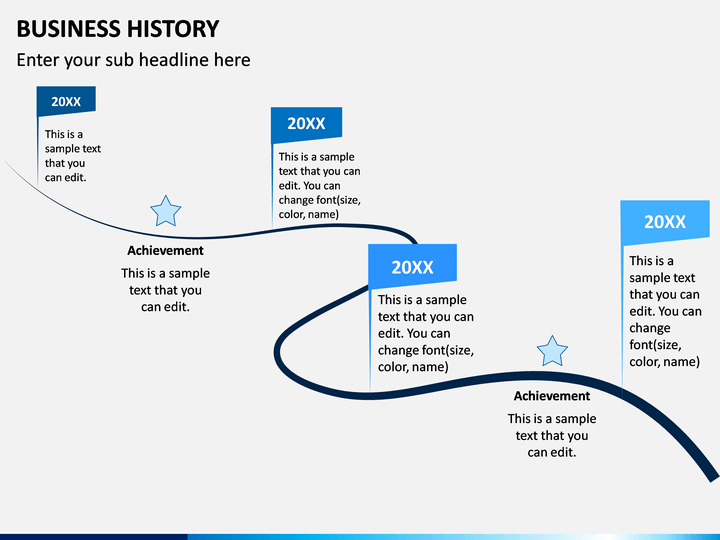
Provide important information about the company’s history in the presentation but remember to keep it as brief as possible. Include pointers like –
- A brief overview of your products and services, basically what you do.
- Include a brief biography of your founders.
- Explain how your company excels in meeting customers’ demands.
- Remember to include all the significant milestones or noteworthy events, if any.
- Include growth statistics.
- You can include information about your past achievements, i.e., important clients and previous projects.
- And last but not least, remember to include the client’s testimonials, another way of adding credibility to your words regarding the company’s growth journey.
Note – You can make this section fun by including anecdotes.
4. Vision and Mission
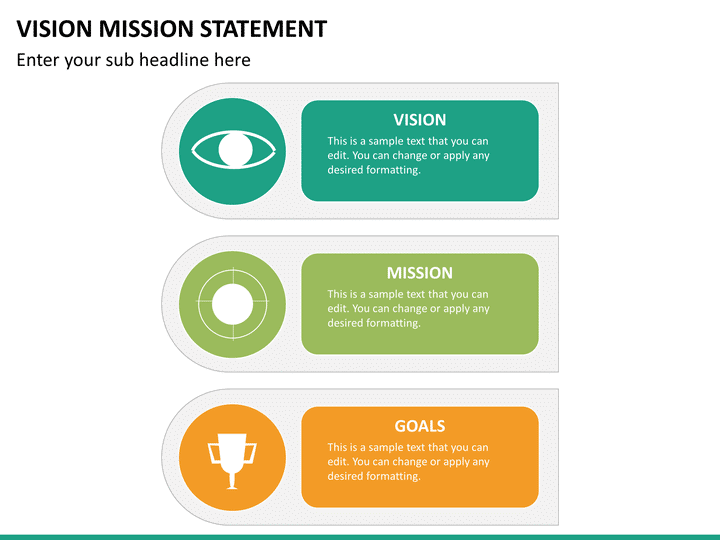
Everything and everyone needs to have some form of purpose to work. Your vision and mission statement is that, and it gives direction to the company and its people to move forward.
It also instills a sense of excitement for the future as you know in which direction you are moving and the work needed to be done for that.
5. Core Values
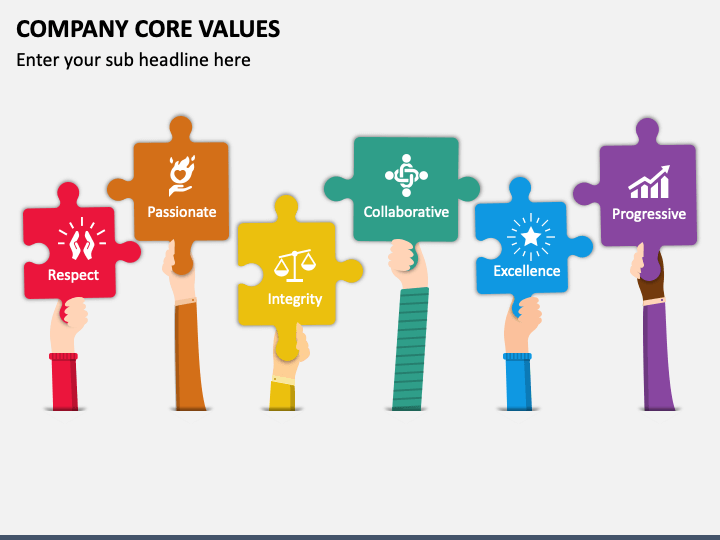
Sharing your company values will set a precedent for your employees, giving them insight into the kind of atmosphere they should expect. It will also let them know what is expected from them.
Some of the company values are honesty, transparency, accountability, sustainability, etc.
6. Structure within the Company
You need to have some form of organizational structure to set a clear chain of authority. It will clearly define roles and communicate where everyone stands in the organization, ensuring coordination among teams. Another benefit is avoiding duplicity of efforts and faster attainment of goals.
A clearly defined organizational structure ensures improved collaboration, efficiency, and teamwork.
7. Colleagues and Team Members
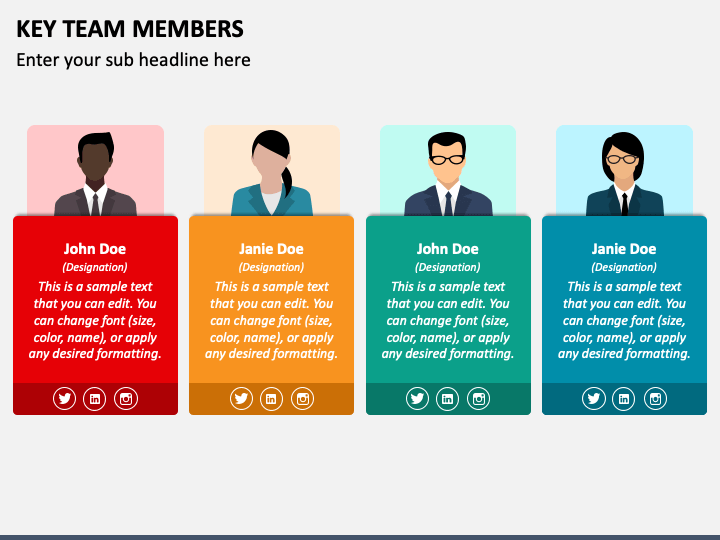
Onboarding presentations are the best opportunity to acquaint recruits with the team and the department. It will help them know who they will be working with, their department, and the nature of their role.
You can ask all the team members to record short videos about themselves and include that in your slide. It will serve as an icebreaker and save much time and energy.
8. Roadmap and Overview of Your Company
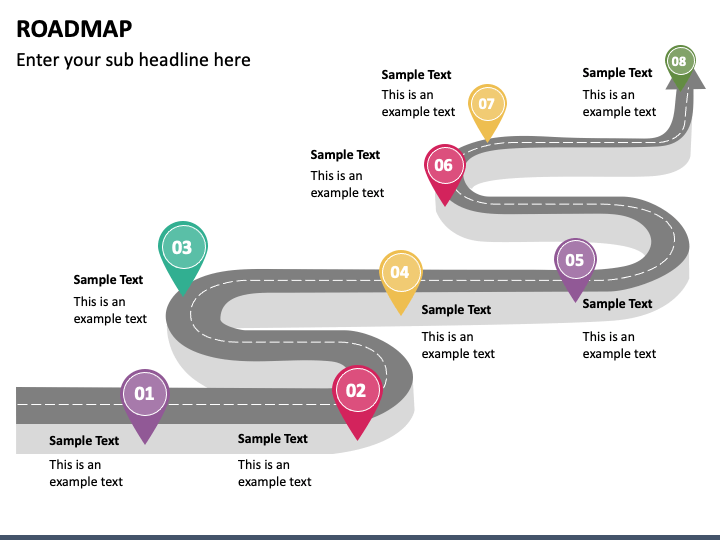
The roadmap for your company will detail what people need to achieve and outline the framework for the company’s success. It will tell where your organization stands and the efforts needed to realize the vision. Your roadmap will include your goals, objectives, and your current status in relation to your competitors.
Include SWOT Analysis in this section highlighting strengths, weaknesses, opportunities, and threats for your business.
9. An Employee Scorecard
Include information about employees’ scorecards in this section. It is essential to provide structure to your employees’ efforts in line with the organizational goals. It will give them a framework to implement goals and strategies and help them become one unit working towards a shared goal.
Include information like name, responsibilities, targets, employee growth metrics, strategic roadmap, etc.
10. Company’s Policies and Code of Conduct
Policies are an essential part of an organization to enforce a structure. It helps a company streamline its process and provide a framework for day-to-day operations. Policies minimize potential risks, thus ensuring workplace safety.
Policies vary depending on the industries, and businesses are required (legally) to update their policies from time to time. Incorporate different aspects, such as retirement, holidays, safety, paid leaves, remote work, etc.
A code of conduct includes the legal and ethical standards followed in your company and gives everyone the guidelines to follow.
11. Details Regarding the Initial Few Days
It takes a little time to settle into a new environment, and giving a heads-up regarding that in the slides would make the transition smooth and easy. Include details for the first week of work. Give them short and structured tasks with a schedule to follow. Increase the workload as they become comfortable enough to work unsupervised.
12. Benefits and Compensation for Employees
Include everything that your employee is entitled to working at your company, i.e., all the general benefits like paid leaves, bonus, health insurance, remote work scenario, other benefits, etc.
Tips to Create a Catchy Onboarding Presentation
Be mindful of the tips mentioned below to create an impactful and memorable presentation.
a). Remember to Include Information for People Working Remotely
Remote employees or people who are working in a hybrid setup are not going to be in the office every day. Remember to include information like remote team building exercises/events, VPNs, chat spaces, etc.
b). Be Mindful of Your Employees’ Needs
Include information that you feel is essential during the employees’ induction time. Find out who you are presenting to and why that information is important or relevant. Learn about their pain points, if any, or their previous work experiences. It will help you customize your presentation accordingly.
Pro Tip – Initiate with all the relevant information they will need to work better in their roles and build on other information from that point. Create a rough outline of the presentation in chronological order for better clarity.
c). Include Fun Information
Include information that will have them excited to work for the company. You can add fun and interesting information about the team or the perks of working for the company.
d). Use Catchy Images
Images will help you create a catchy presentation without relying too much on text. Use bars, graphs, charts, and infographics wherever needed, and try to keep your presentation visually appealing and memorable. Include images of team members and the company to acquaint recruits with the people they will be working with.
e). Be Prepared
Be fully versed with your material to substantiate your authority. Imagine if you were a recruit; how would you feel about the company if the speaker looks unprepared? Prepare well in advance to showcase credibility.
f). Pick Suitable Designs
Whether you select from templates or choose to design a presentation from scratch, remember to incorporate your company’s essence into the presentation slides. Use brand colors to adorn your slides.
g). Include Question and Answer Round
Having a Q&A session will help your audience ask questions, if any, and properly connect with you. It will also make your presentation interactive and help them clarify doubts. Ask recruits for any feedback to help you improve.
Onboarding Presentation Templates
You can create impactful and quick onboarding presentation slides using editable templates. You can easily customize the slides with your company’s color, logo, and branding to deliver a more personalized presentation.
Are You Ready to Create an Impactful Onboarding Presentation?
Onboarding presentations are very important because they are sort of an initial touchpoint between the company and the new hires. It details everything, from company policies and products/services to the vision and core values.
Investing time in creating a proper onboarding presentation will help you smoothen the integration process and create a sense of ease and familiarity for your employees.
The guide details everything you need to create an impactful onboarding presentation. Hope you find it useful!
Looking For Powerpoint Design Agency?
Call Pursho @ 0731-6725516
Telegram Group One Must Follow :
For Startups: https://t.me/daily_business_reads
#Stepbystep #Instructions #Creating #Powerful #Employee #Onboarding #Presentation





